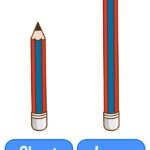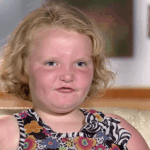Is a Hognose Snake the Right Pet for You? A Detailed Owner's Guide

Introduction: Considering a Hognose Snake as a Pet
Hognose snakes have become increasingly popular among reptile enthusiasts and first-time snake owners alike. Their distinctive upturned snout, dramatic defensive behaviors, and manageable size attract those seeking a unique companion. But how well do hognose snakes adapt to life as pets, and what does responsible care look like? This in-depth guide examines their suitability as pets, essential care requirements, and step-by-step instructions for potential owners.

Source: truespiritanimal.com
Understanding Hognose Snakes: Temperament and Appeal
Hognose snakes are recognized for their docile nature and fascinating behaviors. They are known to play dead or flatten their necks when threatened, which can be entertaining and endearing to observers. These snakes are typically non-aggressive and seldom attempt to bite, making them appealing to beginners seeking a reptile that is interesting yet generally easy to handle [1] . However, it’s important to realize that individual temperament varies: some hognose snakes tolerate occasional handling, while others prefer minimal interaction. Prospective owners should be prepared to respect their pet’s boundaries and avoid excessive handling, especially in the first weeks after bringing one home.
Size, Lifespan, and Initial Commitment
Hognose snakes are relatively small compared to other commonly kept pet snakes. Adults typically reach lengths of 17 to 35 inches, with females being larger than males. Their smaller size makes enclosure management easier and reduces feeding and space requirements. With proper care, hognose snakes can live 10 to 15 years, so potential owners should be prepared for a long-term commitment [3] . Their moderate lifespan is shorter than some larger snakes, which can exceed 20 years, but still substantial enough to require planning and dedication.
Essential Habitat and Environmental Needs
Providing the right environment is critical for hognose snake health. They are fossorial, meaning they spend much of their time burrowing underground. A suitable enclosure must reflect this natural behavior, requiring:
- Enclosure Size : A minimum of 24 inches for hatchlings, scaling up to at least 36″ x 18″ x 18″ for adults [3] .
- Substrate Depth : At least 4 inches of suitable substrate, such as a mix of organic topsoil and play sand, allowing for burrowing and maintaining moderate humidity levels [5] .
- Temperature Gradient : A basking/hot spot of 88-92°F, ambient temperatures of 78-82°F, and a cooler area. Use thermostatically controlled heating elements and monitor with accurate thermometers [1] .
- Humidity : Maintain 30-50% humidity; monitor using a digital hygrometer. Mist the enclosure when needed and use leaf litter to help retain moisture [3] .
- Lighting : While UVB lighting isn’t always required, providing 12 hours of light per day helps regulate natural behaviors [5] .
- Enrichment : Include rocks, branches, and artificial plants for hiding and climbing. Enrichment is important for their mental stimulation and overall well-being [5] .
Setting up the enclosure properly from the start reduces stress and health risks for your new pet. Secure lids and escape-proof designs are essential, as hognose snakes can be surprisingly adept at finding small gaps.

Source: ar.inspiredpencil.com
Diet and Feeding Practices
Hognose snakes are carnivorous and require a diet of appropriately sized, defrosted rodents. Hatchlings are usually started on pinky mice, gradually increasing the prey size as the snake grows. Some snakes may be fussy eaters or require scenting techniques to encourage feeding, especially if they were previously used to amphibian prey. Offering variety, including quail chicks or eggs on occasion, can help maintain interest and ensure balanced nutrition [1] . Feeding should occur once every 5-7 days for juveniles, and every 7-10 days for adults. Always provide fresh water in a shallow bowl and clean it regularly to prevent bacterial buildup [4] .
Cleaning, Hygiene, and Health Maintenance
Cleanliness is crucial for reptile health. Spot clean the enclosure daily to remove waste and uneaten food. Perform a full substrate replacement and disinfect the enclosure every 4-6 weeks. For bioactive setups, replace substrate every 3-4 months. Thoroughly disinfect water bowls weekly and monitor for mites or signs of illness, such as wheezing, loss of appetite, or incomplete sheds [1] . If you observe symptoms like respiratory distress or persistent skin issues, consult a qualified reptile veterinarian promptly. Maintaining a predictable routine for cleaning, feeding, and handling helps your snake feel secure and healthy [2] .
Handling and Socialization: What to Expect
While hognose snakes aren’t social in the traditional sense, many tolerate gentle, infrequent handling. Always support the snake’s body and move slowly. Avoid handling immediately after feeding or during shedding cycles. Some individuals may display defensive behaviors, such as hissing or bluff striking, but rarely bite. Over time, your snake may acclimate to short handling sessions, but it’s essential to respect its comfort level. Always wash your hands before and after handling to prevent the spread of pathogens.
Potential Challenges and Special Considerations
Although hognose snakes are generally considered suitable for beginners, there are certain challenges to keep in mind:
- Feeding Issues : Occasionally, snakes may refuse rodent prey. Scenting techniques or offering a variety of prey can help address this issue.
- Mild Venom : Hognose snakes possess mild rear-fanged venom, which is generally harmless to humans but can cause localized swelling in rare cases. Handle with care, especially around children or those with sensitivities [3] .
- Health Monitoring : Be vigilant for signs of respiratory infections or improper shedding, which can arise from suboptimal humidity or temperature conditions. If health concerns arise, seek advice from a reptile-experienced veterinarian.
- Legal Restrictions : Some regions regulate the ownership of hognose snakes due to their mild venom or concerns about invasive species. Contact your local animal control office or Department of Fish and Wildlife to confirm any licensing or permitting requirements before acquiring a snake.
Step-by-Step: How to Get Started with a Hognose Snake
- Research Local Laws : Before purchasing, verify if there are restrictions in your area by contacting your local animal control office or searching for your state’s Department of Fish and Wildlife guidelines.
- Find a Reputable Breeder or Rescue : Look for breeders who prioritize animal welfare and offer healthy, captive-bred animals. Reptile expos or reputable pet stores may also have hognose snakes available. Ask for health records and details about their feeding history.
- Set Up the Habitat : Prepare the enclosure in advance, ensuring proper temperature gradients, humidity, substrate depth, and secure decorations. Test all equipment for a week before introducing your snake.
- Establish a Routine : Maintain a consistent schedule for feeding, cleaning, and monitoring your snake. Observe your pet daily for changes in behavior or health.
- Connect with the Reptile Community : Join online forums, local herpetological societies, or social media groups for advice, troubleshooting, and support. These communities can offer guidance on everything from enclosure troubleshooting to dietary enrichment.
Alternatives and Additional Resources
If you find that hognose snakes may not be the best fit, consider researching other beginner-friendly snakes such as corn snakes or ball pythons. These species have similar care requirements but may be more readily available or have fewer legal restrictions. For further information on reptile care, consult established organizations such as the Association of Reptilian and Amphibian Veterinarians or search for “hognose snake care” on the websites of major animal welfare groups.
Key Takeaways
Hognose snakes can make rewarding pets for those willing to provide a specialized environment and commit to regular care. Their manageable size, unique behaviors, and low maintenance needs make them attractive to both newcomers and experienced keepers. However, they are not a “set and forget” pet-responsible ownership requires ongoing attention to habitat, health, and legal requirements. By following the above steps and utilizing reputable resources, you can ensure a happy, healthy life for your hognose snake.






